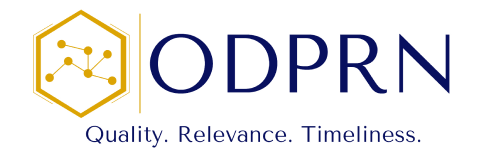
In 2017, the ODPRN was funded by the Canadian Institutes for Health Research (CIHR) to establish an Ontario Opioid Drug Observatory with the goal of bringing together knowledge users, researchers and data to inform and evaluate opioid policy across Ontario. As the opioid crisis has worsened, this need for evidence has grown and evolved. Through the innovative work of the OODO, we have supported the linkage of all opioid prescriptions, opioid-related deaths, and pharmacy-dispensed naloxone to other health administrative databases across the province; the largest, most complete linked repository of data related to opioid use and related harms in Canada.
The ODPRN has conducted important research in this area since 2008 which has helped inform policy in the area. Most research conducted in this area in Ontario has been limited to studying government-reimbursed prescriptions. However, because most Canadians do not receive publicly-funded drug coverage, we have had large gaps in our understanding of opioid prescribing and its consequences.
Through linkage of a broad repository of health care data, the work of the OODO has three broad objectives:
- Patterns of Use and Harm: To conduct ongoing analysis of trends in prescription opioid use and opioid-related harm (overdoses, infections, brain injuries) in Ontario and evaluate the impact of new drug policies and the COVID-19 pandemic on these measures.
- Access to Treatment and Harm Reduction Strategies: To evaluate the safety, effectiveness, and barriers to accessing different forms of treatment for opioid use disorder (OUD) and harm reduction strategies (naloxone, safer opioid supply) across the province.
- Pathways through Care: To assess how rapid access to treatment and primary care impact future patterns of healthcare use and patient outcomes among people hospitalized for serious opioid-related outcomes.
Ontario Opioid Indicator Tool
The Ontario Opioid Indicator Tool provides public access to indicators of opioid use, opioid-related harms, and access to treatment and harm reduction in the province from 2012 onwards using data housed at ICES. It uses data from the Narcotics Monitoring System (NMS), which captures all opioid prescriptions dispensed in retail pharmacies across Ontario. The indicators for opioid-related harm also use data from the Canadian Institute for Health Information National Ambulatory Care Reporting System and Discharge Abstract Database.
This tool is designed to complement Public Health Ontario’s interactive tool on opioid-related morbidity and mortality in Ontario which includes similarly presented indicators of opioid-related emergency department visits, hospitalizations and deaths.
If you are interested in this work and would like to receive updates, please fill out this form.

